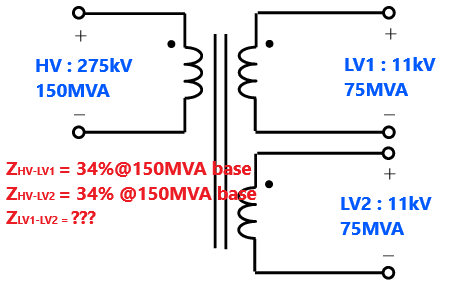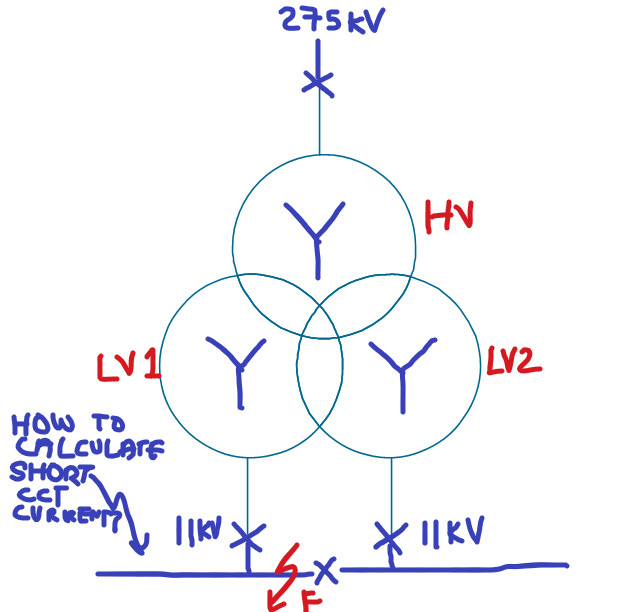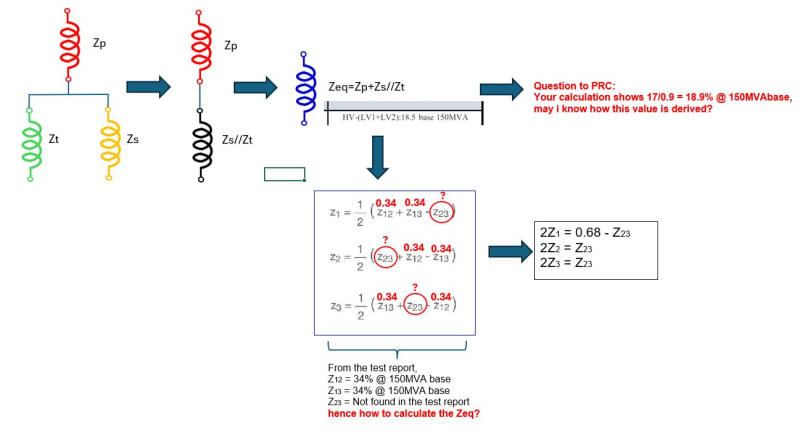Dear Engineers,
I would like to know how to interpret/understand the test result of a three winding transformer specifically the %Z value, from the diagram below i managed to extract the some of the details, however the details of the %Z between LV1 and LV2 winding is not identifiable.
Also i need some guidance to calculate the short circuit current at the LV side which is 11kV when both the LV windings are paralleled. Which %Z value shall be referred?
I have attached the transformer test result and the diagram.


The Transformer brief detail:
1.) Three Winding Transformer
2.) 150MVA/75MVA/75MVA
3.) 275kV/11kV/11kV
Your input and guidance would be much appreciated.
I would like to know how to interpret/understand the test result of a three winding transformer specifically the %Z value, from the diagram below i managed to extract the some of the details, however the details of the %Z between LV1 and LV2 winding is not identifiable.
Also i need some guidance to calculate the short circuit current at the LV side which is 11kV when both the LV windings are paralleled. Which %Z value shall be referred?
I have attached the transformer test result and the diagram.


The Transformer brief detail:
1.) Three Winding Transformer
2.) 150MVA/75MVA/75MVA
3.) 275kV/11kV/11kV
Your input and guidance would be much appreciated.

